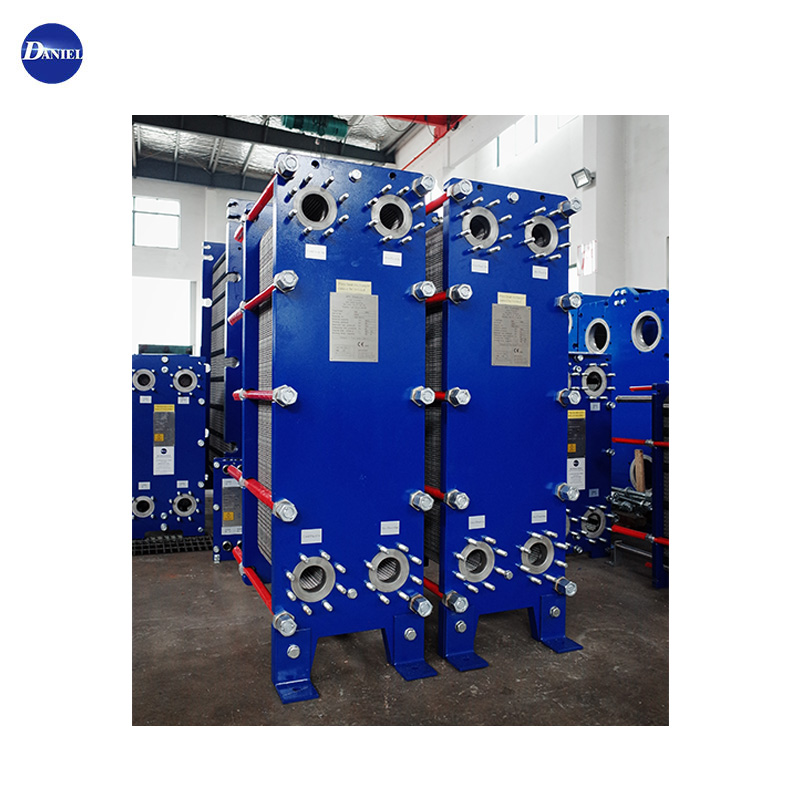
 English
English  Español
Español Português
Português русский
русский Français
Français 日本語
日本語 Deutsch
Deutsch tiếng Việt
tiếng Việt Italiano
Italiano Nederlands
Nederlands ภาษาไทย
ภาษาไทย Polski
Polski 한국어
한국어 Svenska
Svenska magyar
magyar Malay
Malay বাংলা ভাষার
বাংলা ভাষার Dansk
Dansk Suomi
Suomi हिन्दी
हिन्दी Pilipino
Pilipino Türkçe
Türkçe Gaeilge
Gaeilge العربية
العربية Indonesia
Indonesia Norsk
Norsk تمل
تمل český
český ελληνικά
ελληνικά український
український Javanese
Javanese فارسی
فارسی தமிழ்
தமிழ் తెలుగు
తెలుగు नेपाली
नेपाली Burmese
Burmese български
български ລາວ
ລາວ Latine
Latine Қазақша
Қазақша Euskal
Euskal Azərbaycan
Azərbaycan Slovenský jazyk
Slovenský jazyk Македонски
Македонски Lietuvos
Lietuvos Eesti Keel
Eesti Keel Română
Română Slovenski
Slovenski मराठी
मराठी Srpski језик
Srpski језик
Why Choose a Disassembly Plate Heat Exchanger in the Food Industry?
2025-11-24
Efficient thermal processing is essential for safety, quality and productivity in modern food manufacturing. As production volumes grow and hygiene standards rise, many companies ask: Why is a Disassembly Plate Heat Exchanger in the Food Industry becoming the preferred solution for heating, cooling, pasteurization, and CIP processing?
In my experience working with food processors, the answer lies in the system's exceptional heat-transfer efficiency, easy maintenance and strong adaptability. Jiangyin Daniel Cooler Co., Ltd. designs plate heat exchangers specifically to meet food-grade requirements, helping factories improve uptime and product consistency.
What Makes a Disassembly Plate Heat Exchanger Ideal for Food Processing?
A Disassembly Plate Heat Exchanger in the Food Industry is engineered with detachable plates, allowing operators to open the unit easily for inspection, cleaning, or gasket replacement. This ensures strict hygiene compliance across dairy, beverages, sauces, edible oil, purified water, and fermentation lines.
Its compact structure, high thermal efficiency, and flexible plate combinations make it suitable for temperature-sensitive products.
How Does It Function in Real Food-Industry Applications?
The exchanger works by transferring heat between two media—typically product liquid and heating/cooling water—through corrugated stainless-steel plates.
Because the plates can be disassembled individually, users achieve:
-
Precise temperature control for pasteurization
-
Low contamination risk
-
Rapid cleaning and shorter downtime
-
Reduced energy consumption due to large heat-transfer area
These advantages make it a key component in modern food production lines.
Why Are Product Specifications Important?
Food factories must meet strict hygiene, efficiency and maintenance standards. Clear parameters help buyers evaluate whether a Disassembly Plate Heat Exchanger in the Food Industry matches their process demands. Below are typical specifications supplied by Jiangyin Daniel Cooler Co., Ltd.
Product Parameters Overview
1. Structural Specifications
| Item | Details |
|---|---|
| Plate Material | SS304 / SS316L / Titanium |
| Gasket Material | EPDM / NBR / HNBR (Food-grade optional) |
| Frame Structure | Carbon steel with anti-corrosion coating / Stainless steel |
| Plate Thickness | 0.5–0.8 mm |
| Plate Type | Chevron corrugated, wide-gap optional |
2. Performance Specifications
-
Heat Transfer Area: 5–500 m²
-
Max Working Pressure: 1.0–2.5 MPa
-
Max Working Temperature: 150 °C
-
Flow Range: 2–200 m³/h
-
Connection Types: Clamp, thread, flange (food-grade sanitary options)
-
Suitable Media: Milk, beverages, juice, beer, soy products, syrup, purified water, oil, and more
How Do These Features Improve Food Factory Operations?
A Disassembly Plate Heat Exchanger in the Food Industry directly enhances:
1. Production Efficiency
Fast heat transfer shortens batch cycles and reduces energy consumption.
2. Hygiene Control
Full disassembly ensures all plates are cleaned and inspected manually, supporting HACCP and food-safety audits.
3. Cost Reduction
Gaskets and plates are replaceable without removing the entire unit.
4. Process Flexibility
Plate quantity and arrangement can be adjusted for new products or upgraded process flows.
What Are the Main Advantages Compared With Other Heat Exchangers?
-
Much higher heat-transfer coefficient than shell-and-tube
-
Smaller footprint for limited factory spaces
-
Easy gasket replacement
-
Short downtime during routine maintenance
-
Better temperature accuracy for sensitive ingredients
These features make them a universal solution in beverage factories, dairy plants, central kitchens and fermentation workshops.
FAQ About Disassembly Plate Heat Exchanger in the Food Industry
1. What is the main benefit of using a Disassembly Plate Heat Exchanger in the Food Industry?
It provides high heat efficiency and allows full disassembly for manual cleaning, ensuring hygienic production in dairy, juice, sauce, and beverage lines.
2. How often should I clean or inspect the disassembled plates?
Inspection frequency depends on product viscosity and solids content. For dairy and beverages, many factories inspect weekly or per shift. The detachable design makes plate cleaning fast and thorough.
3. Can a Disassembly Plate Heat Exchanger in the Food Industry be customized?
Yes. Jiangyin Daniel Cooler Co., Ltd. customizes plate materials, gasket types, heat-transfer areas and flow capacities to fit specific processes such as pasteurization, cooling or heat recovery.
4. What types of food products are most suitable for this system?
Milk, yogurt, juice, tea drinks, plant protein beverages, beer, syrup, edible oil and purified water benefit greatly due to precise temperature control and hygienic requirements.
Conclusion
A Disassembly Plate Heat Exchanger in the Food Industry delivers outstanding efficiency, reliable sanitation and low maintenance costs—key advantages for competitive food manufacturers. Whether for pasteurization, cooling, heating or energy recovery, the system enhances productivity and supports strict hygiene standards.
For professional consultation or technical support, please contact Jiangyin Daniel Cooler Co., Ltd., your trusted partner in advanced heat-exchange solutions.






